Today, I am excited to share a new interview with one of my floral heroes, Frances Palmer. Frances is a celebrated potter based in Connecticut whose work is greatly influenced by the beautiful flowers that she grows in her garden. I’ve been a fan of hers for more than a decade now and have slowly been building a collection of her handmade vases, which are some of my most treasured possessions.
Frances’s first book, Life in the Studio, was an absolute masterpiece, a rare combination of essays, photographs, recipes, and tutorials, along with her wisdom and life lessons. Every person I have gifted this book to has read it cover to cover in a single sitting and reported that it left them changed.
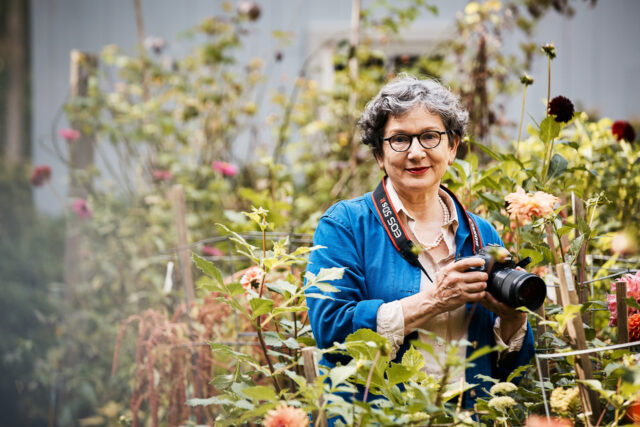 I first learned Frances was writing a second book when she asked if I would consider writing the foreword. The request was such an honor, and when the advance copy arrived, I was completely blown away by what she had created.
I first learned Frances was writing a second book when she asked if I would consider writing the foreword. The request was such an honor, and when the advance copy arrived, I was completely blown away by what she had created.
I was lucky enough to get to interview Frances about her newest book, Life with Flowers, and the process of writing it. Be sure to set aside some time for this one because it’s a real treat. And at the bottom of this post, we’re also hosting a book giveaway.
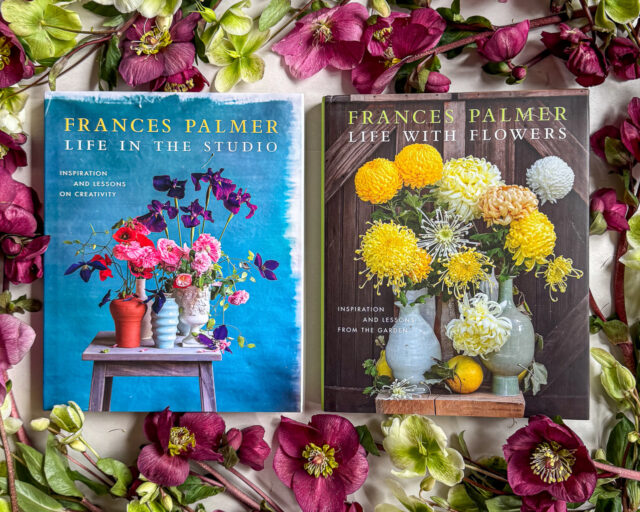 Thank you so much, Frances, for taking the time to share about your new book with Floret readers. I’ve been looking forward to its release for months now. Life with Flowers is overflowing with so much inspiration, information, different flower varieties, and very practical, down-to-earth advice. While I’ve been working with flowers for years, I still learned so many new things. How did this book come about?
Thank you so much, Frances, for taking the time to share about your new book with Floret readers. I’ve been looking forward to its release for months now. Life with Flowers is overflowing with so much inspiration, information, different flower varieties, and very practical, down-to-earth advice. While I’ve been working with flowers for years, I still learned so many new things. How did this book come about?
I was asked by my publisher Lia Ronnen at Artisan Books to do a second volume as a follow-up to Life in the Studio, which was published in 2020. Life with Flowers is a very personal account of how I think about flowers in relationship to my ceramics and photography. It took 4 years of writing and editing to decide which types to include and how to show them both in the garden and in the studio as still lifes.
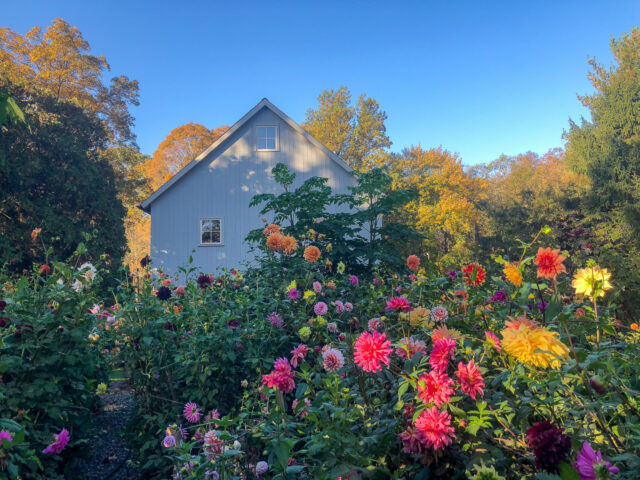 The book is organized seasonally, but rather than following the conventional calendar, you’ve divided it into six periods of growth, or what you call the botanical calendar. Can you talk more about the significance of this structure and how it influences how you view the garden?
The book is organized seasonally, but rather than following the conventional calendar, you’ve divided it into six periods of growth, or what you call the botanical calendar. Can you talk more about the significance of this structure and how it influences how you view the garden?
My wonderful editors, Bridget Monroe Itkin and Ellen Morrissey, and I wanted to think outside of the conventional calendar months. The seasons known as Prevernal, Vernal, Aestival, Serotinal, Autumnal, and Hibernal are more nuanced descriptions of times in the garden.
As I write in the book, I visualize the flowers and trees blooming in a series of waves, or as a tapestry, where one type comes into crescendo just as another is finishing. These old and new flowers interweave and converse with each other. I love to arrange the almost gone with the fresh, appreciating all stages of growth.
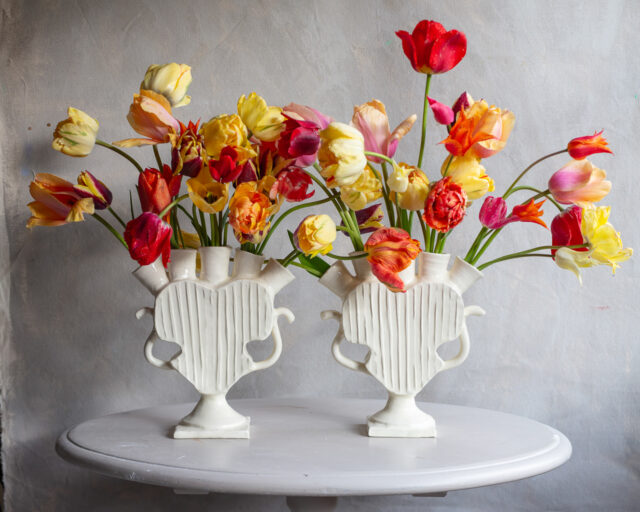 In the book, you describe arranging flowers as a parallel practice to your work in the studio, and say, “I consider the pottery and the flowers as the two halves of my earthly paradise.” Can you elaborate on this?
In the book, you describe arranging flowers as a parallel practice to your work in the studio, and say, “I consider the pottery and the flowers as the two halves of my earthly paradise.” Can you elaborate on this?
I first began growing flowers to inform the shape and scale of a pot in a photograph. Over the years, however, I became so entranced with the gorgeousness of the flowers themselves, that I delved deeper and deeper into learning how to grow an expansive list. Now it is a dialogue between the pots and the flowers. Sometimes I make a vase or bowl to accommodate what is happening in the garden as much as finding the right flower to fill a vessel.
I am always imagining how to combine the outside with the inside studio practice and even in winter, with my greenhouse that lives off the basement of my barn, I have found a way to keep the flowers and pots happening together.
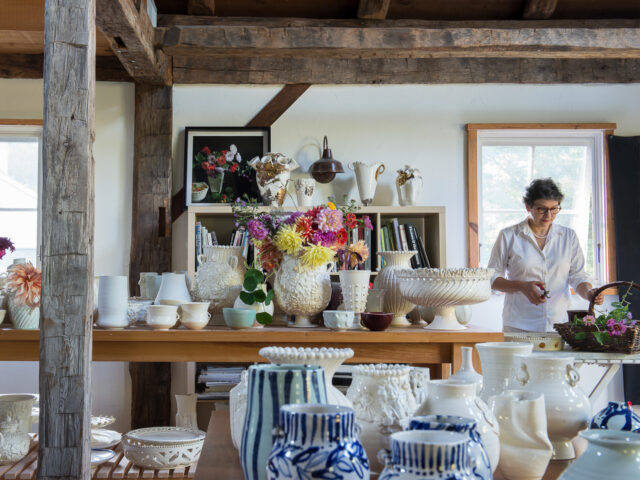 I have always been so inspired by how disciplined you are when it comes to maintaining a creative practice. I know for myself the incredible benefits that come from consistently creating, but it can sometimes feel like a chore to make the time. Do you have any advice for maintaining a regular practice even when you’re not feeling inspired?
I have always been so inspired by how disciplined you are when it comes to maintaining a creative practice. I know for myself the incredible benefits that come from consistently creating, but it can sometimes feel like a chore to make the time. Do you have any advice for maintaining a regular practice even when you’re not feeling inspired?
My advice would be to try and work every day to achieve a true understanding of your process. Consistency and perseverance bring great rewards. I feel very lucky that I have found what I love to do in making pottery and gardening. Gratefully, these have never felt like a chore. Even after many years, I am excited to get out to the studio or flowers and start a new day. I try and do the most arduous or time-consuming task first thing when I have the best energy and focus.
If I need to step away for a day to recharge, I will go to an exhibition or public garden. I love to learn something new to give a fresh perspective. I have been taking a class on palladium platinum printing combined with digital negatives in New York City on Fridays, and this has been a fantastic change of pace.
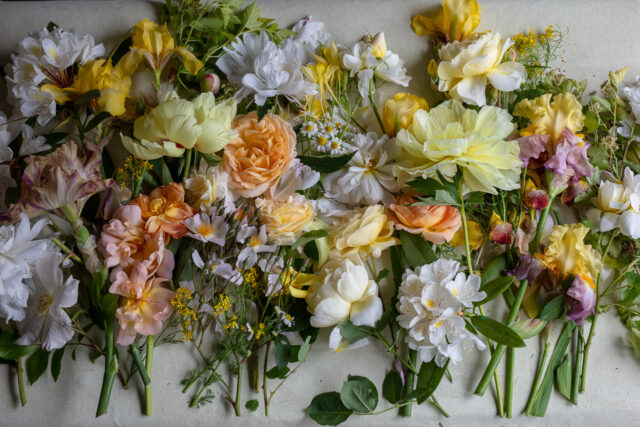 One of my favorite parts of the book is that you explore an entire year through the different flower varieties growing in your garden. Can you share more about why you included the information you did in the flower profiles to give readers a little taste of what they will discover?
One of my favorite parts of the book is that you explore an entire year through the different flower varieties growing in your garden. Can you share more about why you included the information you did in the flower profiles to give readers a little taste of what they will discover?
For me, each flower has a reference in addition to the basic information on how and when to plant. I think of the origin of its name, where it was originally found, what art, historical, or mythical association it has, and whether there is a photograph or painting that inspired me to choose it.
The plants in my garden are all connected, and this adds to the tapestry theme that I mention. I look for types that are excellent for cutting and that I know will look beautiful in a vessel. Just like the different clays that I employ, each flower has its own personality and requirements.
I mention early in the book the passage from Alice in Wonderland where Alice converses with the tiger lily and roses. I chat with my garden the same way and try to understand the essence of everyone.
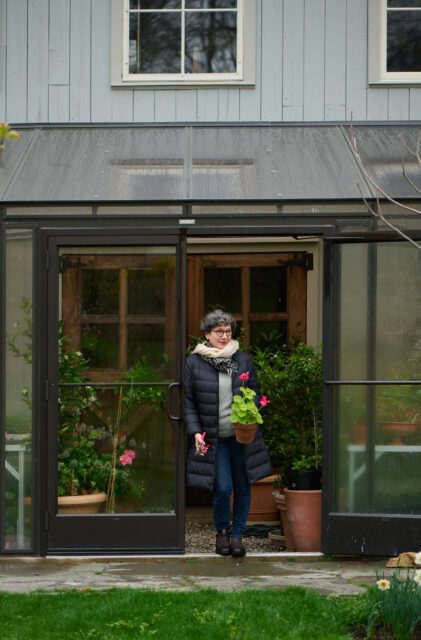 You clearly have a passion for travel, which is mentioned many times throughout the book. For those who are craving more adventure in their life and longing to visit gardens around the world, can you share a few of your very favorite places?
You clearly have a passion for travel, which is mentioned many times throughout the book. For those who are craving more adventure in their life and longing to visit gardens around the world, can you share a few of your very favorite places?
I do mention gardens to visit in the book, but this is purely based on where I have been able to travel. There are, obviously, so many that I would love to visit in the future. I have learned much from places in the U.K., such as Rousham, Stourhead, Charleston, and Sissinghurst Castle Garden. The Moss Garden in Japan. Monticello in Virginia.
Also, the Open Days program organized by the Garden Conservancy is a brilliant way to see small personal gardens around the U.S. The program posts the gardens by region and month, so it is easy to see a garden locally, without having to travel too far. I find these personal gardens as wonderful as the grander, more famous places.
 In the book, you say, “I prefer to think of the flowers in terms of waves rather than specific seasons or months in the year. I envision their bloom times as a series of occurrences that ebb and flow from one into the next…. As one finishes, another is about to open or is already at its midway point, like a ballet where dancers glide on and off the stage.” Can you talk more about this idea and how it impacts your approach to garden planning?
In the book, you say, “I prefer to think of the flowers in terms of waves rather than specific seasons or months in the year. I envision their bloom times as a series of occurrences that ebb and flow from one into the next…. As one finishes, another is about to open or is already at its midway point, like a ballet where dancers glide on and off the stage.” Can you talk more about this idea and how it impacts your approach to garden planning?
As I said above, all stages of bloom are fascinating and important to observe. Bloom time can be estimated, but it changes slightly each year due to the weather and my work and travel schedule. I am not a rigorous planner, so I have a calendar in my brain that I work with in terms of planting.
My strategy is to have something blooming every day and orchestrate this as best I can. This is augmented by the trees and shrubs that support the flowers over the months. I place the plants randomly based on height more than bloom time and often call the beds my “survival of the fittest” garden.
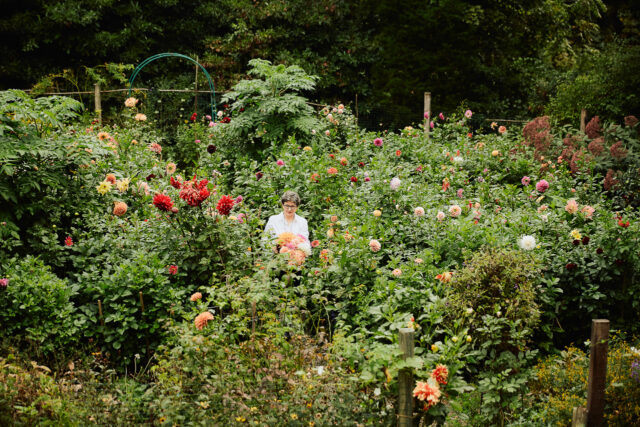 Creating and tending a garden can be a tremendous amount of work, but for those of us who do it, the gifts are worth every bit of the effort. I would love to hear your thoughts on the benefits of both tending a garden and getting to work with the flowers that you lovingly grow.
Creating and tending a garden can be a tremendous amount of work, but for those of us who do it, the gifts are worth every bit of the effort. I would love to hear your thoughts on the benefits of both tending a garden and getting to work with the flowers that you lovingly grow.
So much has been written about the mental and physical benefits of gardening, and I heartily agree with these ideas. I am grateful to have the space to grow trees and flowers, and this is never taken for granted. I have great respect for the earth and wish to maintain it organically and sustainably. I go out to the gardens many times across the day to breathe, observe what blooms have opened, and watch the bees and birds.
Homegrown flowers are more beautiful and have great individuality. Sometimes they are perfectly and mathematically formed and sometimes not, which I love. They last longer because they go from the garden directly into a vase.
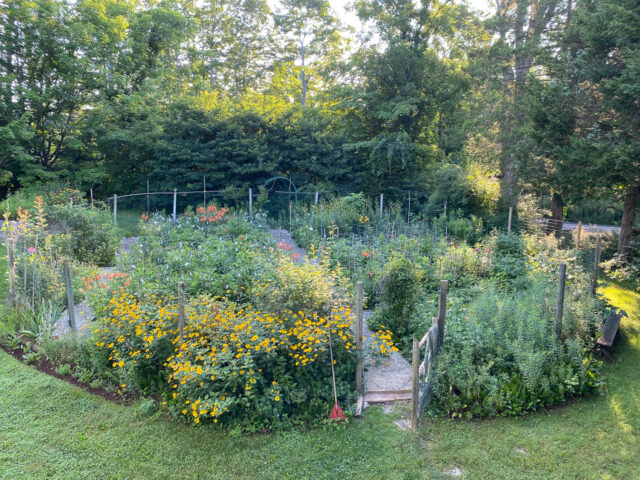 For those who are new to gardening or have dreams of creating their very own cutting garden, getting started can be quite intimidating, and it’s hard to know where to begin. Do you have any advice for new growers?
For those who are new to gardening or have dreams of creating their very own cutting garden, getting started can be quite intimidating, and it’s hard to know where to begin. Do you have any advice for new growers?
The first thing I would say is to be kind to yourself. As you know, it takes a few seasons to understand what works and what doesn’t in one’s particular space. There is no such thing as failure, and all efforts should be viewed as an exploration. Sometimes plants flower well, and sometimes they don’t. You need to understand your climate, your soil, and your growing times, and these take patience to understand. Rome was not built in a day.
Make a list of what flowers you wish to have for cutting, approximately when they will flower, and your availability to maintain and water over the growing season. Annual flowers are an easy entry into growing and getting a feel for the season’s cycle. I go into more detail in the book, but suffice it to say, read and study as much as you can. There is a plentitude of information online, but trial and error are the best teachers.
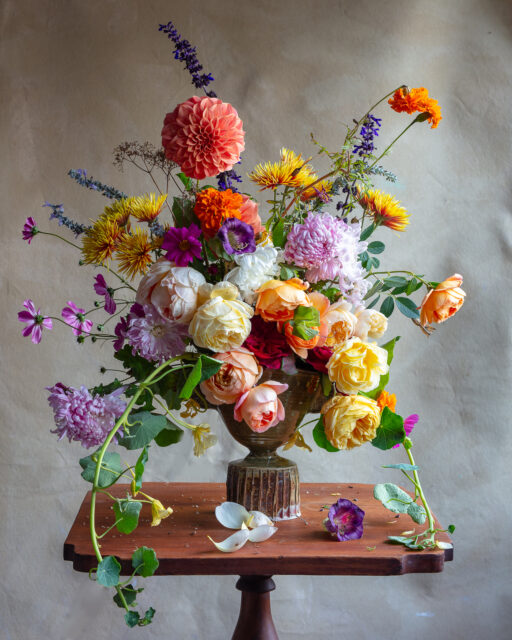 In addition to all of the wonderful growing advice and variety profiles, the book features an overwhelming number of stunning arrangements made from the flowers grown in your garden. Can you talk a little bit about your approach to floral design and the advice you have for others who want to expand their design skills?
In addition to all of the wonderful growing advice and variety profiles, the book features an overwhelming number of stunning arrangements made from the flowers grown in your garden. Can you talk a little bit about your approach to floral design and the advice you have for others who want to expand their design skills?
Because I can walk through the gardens often, I see what is ready to pick and arrange. I think about the colors and different shapes and what the flowers are telling me to harvest. Sometimes it is a riot of colors and other days I gather ones of a similar palette. It also depends on the pottery that I plan to use in the display.
I try not to overthink the placement of the stems. I use branches or strong stems first in the water to hold up the other flowers instead of chicken wire or tape. I rarely use a flower pin. I try to keep the design straightforward and not fuss too much, so the arrangement has a vibrancy. If you practice often, your style will emerge.
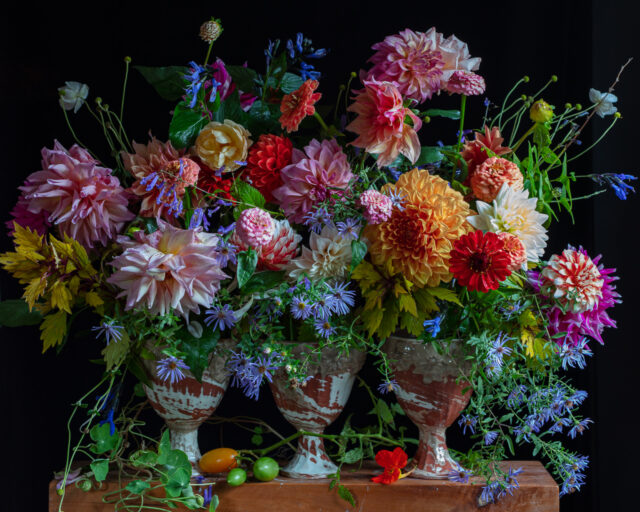 Now that this beautiful book is out in the world, what are your plans for the rest of the growing season? Will you be hosting any workshops or making any exciting journeys? I’d love to hear what you have planned next.
Now that this beautiful book is out in the world, what are your plans for the rest of the growing season? Will you be hosting any workshops or making any exciting journeys? I’d love to hear what you have planned next.
2025 will be a busy year, and I am excited about the schedule. My Garden Conservancy Open Day is September 20, so I am already planning what annuals and new dahlia tubers to plant. I have several exhibitions scheduled and will be making new work for these.
First is the Object & Thing show of wood-fired pieces in New York on May 13. At the end of May, I will be collaborating with a photographer at the Fraenkel Gallery in San Francisco. I have my annual exhibition in Maine at the North Haven Gallery at the end of July and then in mid-August photographs and terracotta at the Berkshire Botanical Garden. In September, I will be teaching a class at the Oak Spring Garden Foundation in Virginia about Mrs. Mellon’s topiaries and showing the students how to make their own.
I’m excited to be giving presentations about the new book around the country. Lots of wonderful things to look forward to as well as two new granddaughters—one in San Francisco and one in Stockholm! So much to be grateful for.
Frances, thank you so much for taking the time to share all about your beautiful new book. I’m so happy it’s finally out in the world.
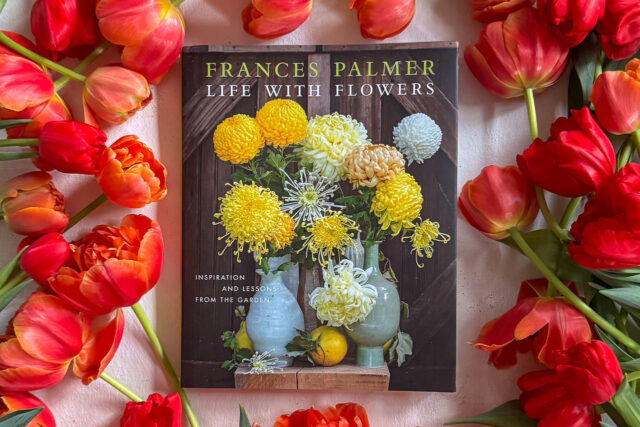 To celebrate the release of Frances’s new book, Life with Flowers: Inspiration and Lessons from the Garden, we’re giving away five copies. For a chance to win, simply post a comment below telling us about your favorite part of this interview. Winners will be announced on May 20.
To celebrate the release of Frances’s new book, Life with Flowers: Inspiration and Lessons from the Garden, we’re giving away five copies. For a chance to win, simply post a comment below telling us about your favorite part of this interview. Winners will be announced on May 20.
Update: A huge congratulations to our winners Andrea Bond, Lois Osborn-Cavallo, Debra Robeson, Melinda Redding and Madeline Graye.
To learn more and connect with Frances, be sure to visit her website and follow her on Instagram. Life with Flowers is available from Amazon, Bookshop.org, and your favorite local bookstore. You can also purchase signed copies from Frances’s shop.
Please note: If your comment doesn’t show up right away, sit tight; we have a spam filter that requires us to approve comments before they are published.
Floret only lists companies and products that we love, use, and recommend. All opinions expressed here are our own and Floret does not offer sponsored content or accept money for editorial reviews. If you buy something using the retail links in this post, Floret may receive a small commission. Thank you for your support!

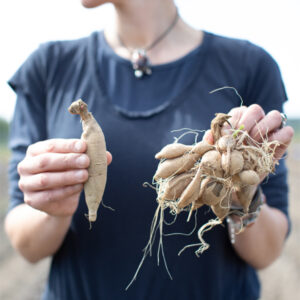
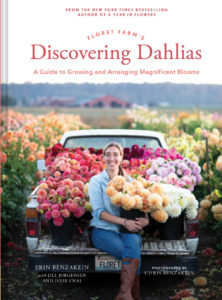
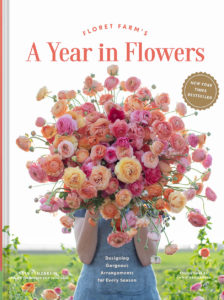
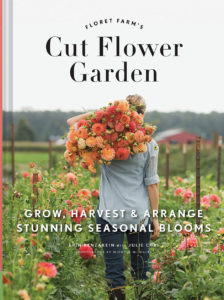

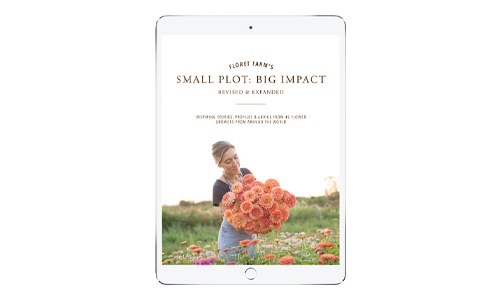
Leann Orr on
I love that she says, ” all efforts should be viewed as an exploration” and that’s the way I approach my flower garden beds. I love fresh garden arrangements and using what your garden is providing.